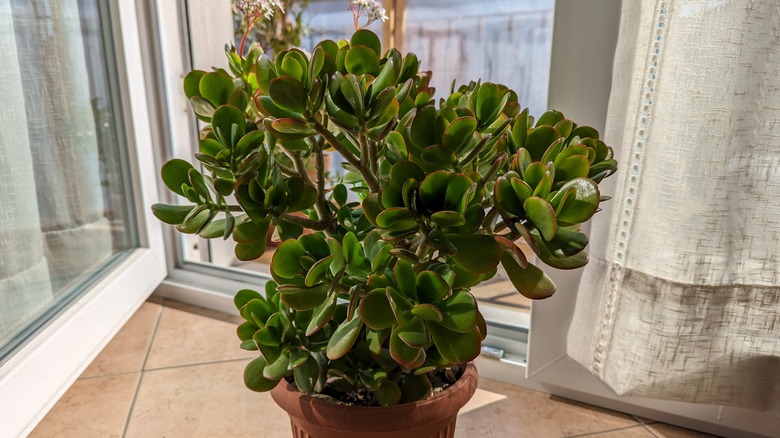The Worst Spot In Your Home For Indoor Plants
Indoor plants are a great way to add beauty and freshness to your home. From a fireplace mantle or a windowless bathroom to a windowsill or shaded corners, they function as exquisite decorative pieces that fit right in with your decor. However, placing houseplants merely on a whim can do more harm than good. When household plants aren't provided with their ideal growth conditions, they're quick to turn lackluster, spoiling your abode's aesthetic. So, to grow the healthiest household plants, avoid drafty areas of your home and keep them away from doors and windows, especially the ones frequently opened during a cold spell.
While some homeowners do pay attention to the plant's light and water needs, they often lose sight of the wild temperature swings caused by drafts. Indoor plants are extremely sensitive to temperature fluctuations and display yellowing and browning leaves when exposed to hot and cold breezes. They may also turn droopy and leggy, becoming hotbeds for diseases when temperature variations exceed their tolerance levels.
Cold draft spots to avoid
As indoor plants thrive the most between 65 and 75 degrees Fahrenheit while enduring a 10 to 15-degree Fahrenheit drop at night, any more extreme dips during the cool season can be extremely damaging. Tropical plants may lose their sheen beyond 40 degrees Fahrenheit. So, considering their lack of winter hardiness, it's essential to insulate them from cold drafts coming from open windows and doors, including patio doorways. Otherwise, your leafy friends may experience symptoms of an overwatered plant, with wilted leaves and stunted growth, as the cool breeze prevents the soil from drying.
Moreover, during the winter, windows can often turn frosty, subjecting your plants to cooler temperatures that are detrimental to their health. While you can use a blanket to block cold drafts between your leafy buds and windows, removing your greens from the windowsill during the night might be safer. Also, avoid placing your shrubs around air-cooling vents, as the air blast can cause their leaves to grow yellow.
Heat can be just as damaging
Like cold drafts, too much heat is harmful to indoor plants, too. They afflict plant leaves with sunburn, leading them to yellow and eventually turn brown. It isn't unusual for foliage to burn down to a crisp and wither away in most cases unless they're heat-tolerant plants like geraniums, caladiums, cacti, and other succulents. Some varieties may rapidly lose their flowers and die prematurely. So, to prevent your indoor plants from an untimely demise, keep them away from all sources of heat. Some of the common heating sources include kitchen stoves, fireplaces, and electronic appliances like dryers, ovens, and refrigerators.
Further, maintain adequate distance from heating and ventilation vents that throw dry gusts of air at indoor plants, stressing them out. While they can damage your flora, they may also serve as pathways for spider mites and bugs that can infect your indoor plants. You must also strive to place your household plants away from heating systems, including radiators and registers, especially during the winter, as the dry air can damage them.


